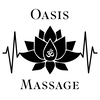|
by Amanda Coleman
As we discussed previously, Reiki is a healing technique based around the principle of channeling energy to activate the natural healing processes within the body. The origins of Reiki are unknown, but Reiki as we understand it today can be mainly credited to three individuals. Dr. Mikao Usui, Dr. Chujiro Hayashi, and Mrs. Hawayo Takata. It's said that Dr. Mikao Usui rediscovered Reiki during a period of fasting and meditation in the early 1900's. His first school/clinic was opened in Harajuku, Tokyo in April of 1922. By 1925 Dr. Usui was in such high demand he opened a larger school in Nakano. In the years that followed Dr. Usui is believed to have taught over 2,000 people with only 15-17 reaching the highest level (what is known now as “Reiki Master”). Dr. Chujiro Hayashi started his Reiki training with Usui Sensei in 1925. It is believed he was one of the last Reiki Masters trained by Usui and is credited with the further development of the Reiki hand positions that we now use in the West. One of his last initiates, Mrs. Hawayo Takata, brought her knowledge and training to Hawaii, introducing Reiki to the United States. Reiki is normally split into 3 levels: Reiki 1, Reiki 2 and Master level, each with their own “attunement” or initiation. The attunement ceremony isn't easily explained, but it is commonly described as the Reiki Master channeling and sharing reiki energy with the student. Once this channel has been opened, the student can then practice and learn to use this energy for themselves and other people. Attunement is given at each level, can be given many times, and is usually a powerful experience for both the teacher and student. Coming Soon! In Part 3, we'll discuss what to expect during a treatment. Sources:
1 Comment
1/14/2016 0 Comments What is Reiki? (Part 1)By Amanda Coleman
Since I've just recently joined the team here at Oasis, my familiarity with the world of alternative medicine extends only as far as I've read, and Reiki is something I've always wanted to know more about. When talking about “energy work”, Reiki seems to be one of the first things to come to mind. These days, Reiki is very commonly paired with massage, as the styles of treatment complement each other and work towards a similar purpose. I did some more reading on the subject, and thought I'd share with you some of the interesting things I found. The word Reiki comes from a combination of the Japanese words Rei, meaning God's wisdom, or the Higher Power, and Ki, meaning life force energy. When combined, Reiki means “spiritually guided life force energy.” And though Reiki is based on this spiritual energy, it is not a religion and does not require any specific religious beliefs. By definition from the Oxford Dictionary, Reiki is “a healing technique based on the principle that the therapist can channel energy into the patient by means of touch, to activate the natural healing processes of the patient's body and restore physical and emotional well-being.” Reiki is a holistic therapy intended to:
One of the most impressive, and unique qualities of Reiki, is that there are no side effects or adverse reactions, and no contraindications. Which means trying Reiki is completely risk free in the sense that even if it doesn't work, there's no risk of negative side effects or unintended consequences. Very few things in life are so safe to try. So really it begs the question: Why not? If you'd like to learn more, keep an eye out for our next section of this series: Origins and the Attunement (Training) Process. Sources |
|
|
Contact Us:
|
